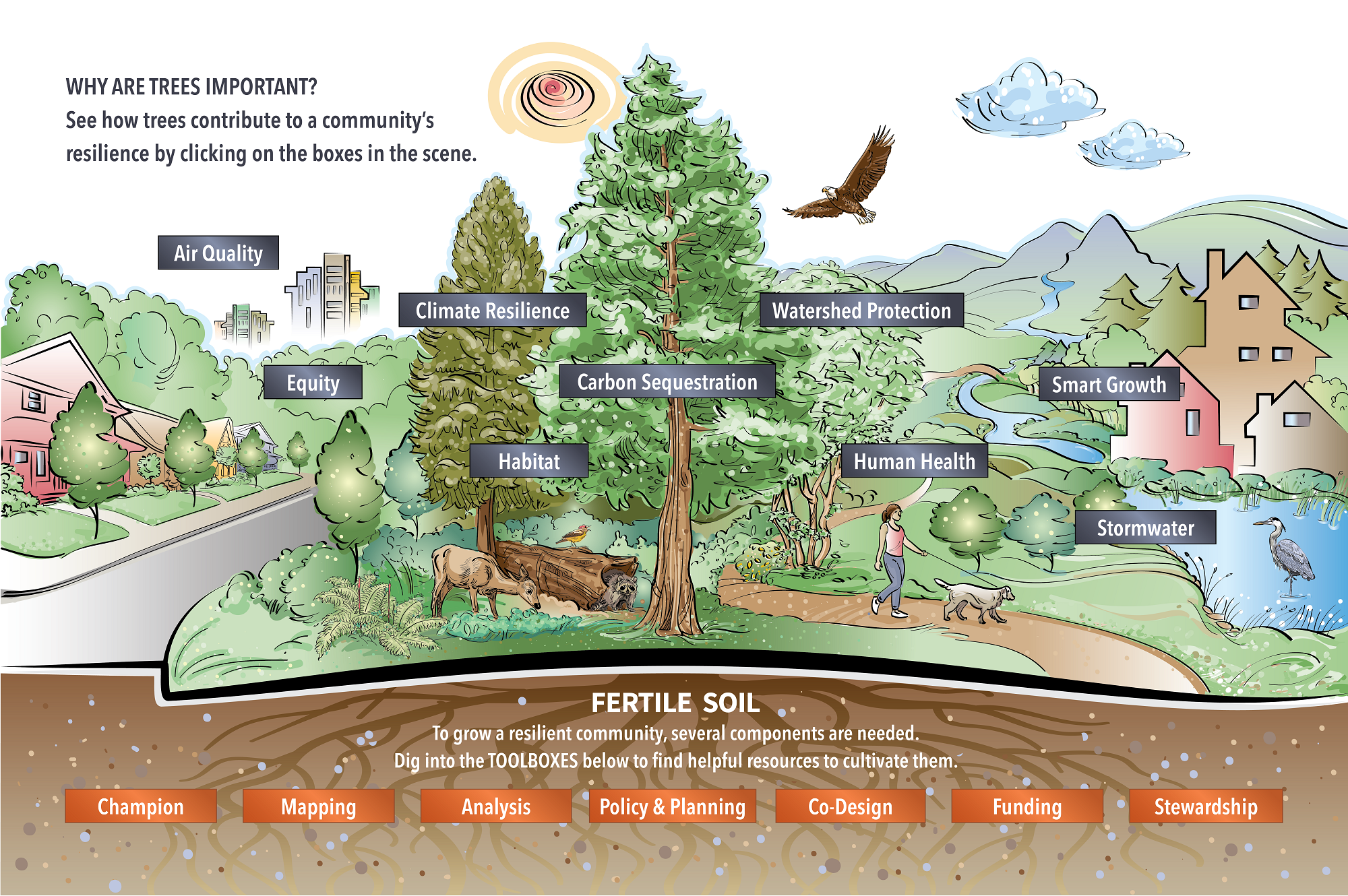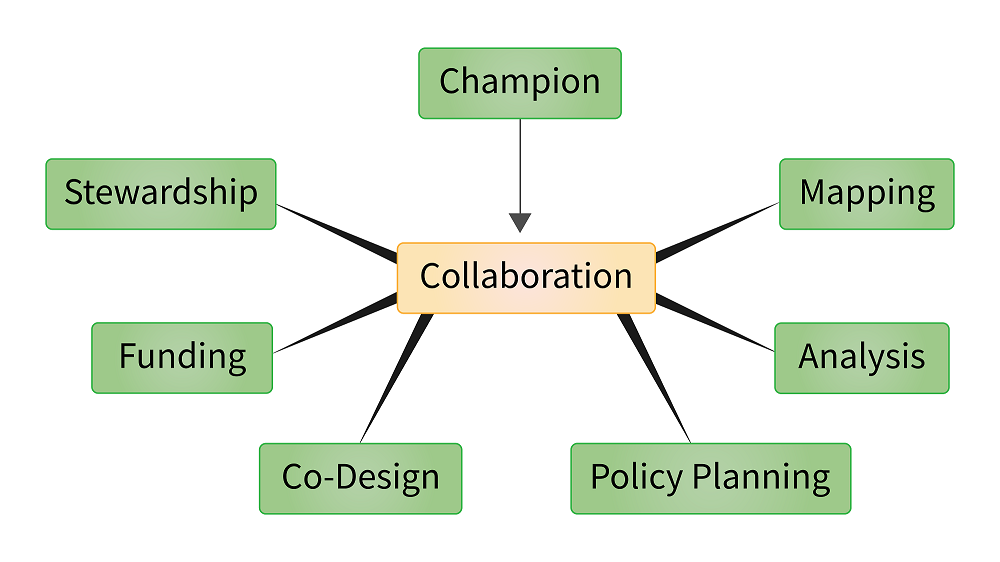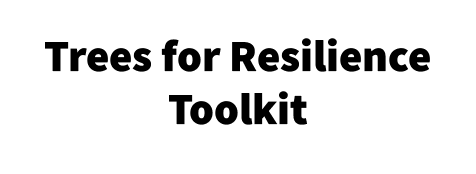TREES FOR RESILIENCE
A Toolkit to Grow Tree Canopy and Forests for Puget Sound Communities
Welcome to Trees for Resilience, a compendium of local and national research, case studies, and resources specially curated to help regional decision-makers, planners, and managers integrate urban forests and tree canopy into the fabric of the community for greater livability and resilience. Explore the site to gather resources, models and ideas of how your community can enhance and grow the impact of your urban forests, sustain projects and programs, and improve health and resilience for all.
WHERE ARE THE TOOLKIT RESOURCES?
In the FERTILE SOIL below the scene are Toolboxes essential to growing a healthy, community forest. Check out each Toolbox full of resources relevant and useful for communities in the Puget Sound region, along with considerations that can help streamline efforts.
What's an Urban Forest?

Air Quality
-
Urban forests in the U.S. have been known to produce enough oxygen to offset the annual oxygen consumption of approximately two-thirds of the country’s population.
-
Research shows that trees can reduce energy costs, air pollution, and heat-related illnesses caused by “urban heat island” effects.
-
Urban trees in the U.S. are estimated to remove 822,000 tons of pollution each year, a $4.7 billion value for the removal of ozone, nitrogen dioxide, sulfur dioxide, and small particulate matter.
Equity
-
Smart growth strategies, including green infrastructure and conservation, can redress inequitable distribution of natural assets across communities.
-
Research has shown environmental inequities in the distribution of street trees and the demographics within neighborhoods, reinforcing the need to prioritize greening efforts in neglected areas.
-
Neighborhood greening projects (tree planting, green space restoration) that engage neighborhood residents in planning and implementation can lead to increased community stewardship.
Climate Resilience
-
Sustainability and climate action initiatives support an integrated agenda connecting the benefits of the environment and tree canopy to community resilience.
-
Extensive research confirms that trees, parks, and other natural settings are essential to livable and sustainable cities, by improving the environment and supporting human health.
-
Well-managed, healthy urban forests are a powerful tool for helping communities adapt to climate changes, mitigate climate-related impacts, and recover physically and emotionally from climate-induced stress.
Habitat
-
Healthy urban forests support greater biodiversity and ecosystem resilience.
-
Increased connectivity of urban forests and green space improves wildlife habitat.
-
Native forest remnants in urban communities are critical ecosystem refugia that also include habitat for organisms that build soil health, store carbon, and support climate resilience.
Carbon Sequestration
-
Urban trees can help mitigate climate change by retaining stored carbon in tree tissue and sequestering atmospheric carbon from the key greenhouse gas, carbon dioxide (CO2).
-
The capacity of mature trees as "carbon sinks" in the urban landscape is significantly higher than planting new, younger trees.
- An urban forest carbon registry facilitates businesses to take local climate action by planting and protecting trees through carbon offsets and impact certification.
Watershed Protection
-
Maintaining tree canopy cover throughout a watershed can significantly reduce the cost of stormwater facilities and the frequency and intensity of flooding.
-
The function and benefits of healthy forest cover in the headwater regions and the mouths of streams and rivers greatly enhance community livability and resilience.
-
Increased tree canopy and forest cover in locations with identified pollutant loads can enhance water quality in watersheds.
Human Health
-
Urban forests improve air quality and reduce heat effects for a more livable community.
-
Interaction with nature, such as a forested green space, lowers anxiety and stress and elevates mood and creativity while improving physical wellbeing.
- Healthy forests support healthy communities. Societal impacts of urban ecosystems include improved social health, cohesion, and resilience, as well as improved social equity from access to nature.
Smart Growth
-
Balancing development with retention of green spaces and forest remnants enhances the many environmental, social, and human health benefits.
-
Retention of mature trees during development is a significantly more effective way to offset erosion and runoff associated with increased impervious surfaces.
-
Neighborhoods with maintained street trees, parks, and green spaces tend to have a positive sense of community and higher market value.
Stormwater
-
Trees, alone and with associated vegetation and healthy soils, are great interceptors and filters of precipitation that help mitigate the effects of storm flow such as flooding, erosion, and infrastructure overload.
-
Regional study confirms conifers and evergreens are more effective stormwater mitigators with their persistent foliage during our rainy seasons.
-
Incorporating trees into green stormwater infrastructure results in larger-scale mitigation and benefit to ecosystems and communities.
Local Success Stories
Cultivating a Community Forest
Urban and community forestry programs across the Puget Sound Region are diverse and highly variable. Whether in a small town or a large city, an integrated forestry program adds value to any community by preserving, managing, and growing a thriving tree canopy and healthy forest ecosystems that deliver clean air and clean water and promote wellbeing and resilience for all.

Successful Framework
A common framework has been observed with successful urban and community forestry programs regionally and nationally, which mirrors the component toolboxes in the FERTILE SOIL above. In every prosperous program, there are two key components to success: consistent collaboration and supportive champions. As opportunities and needs arise, a community can engage in the appropriate activity to further grow a strong and sustainable program: mapping, analysis, policy planning, co-design, funding, and stewardship.
How You Can Engage Decision-Makers with the Toolkit
Ben Thompson with the Washington Department of Natural Resources and Elizabeth Walker of Terra Firma Consulting speak about how you can use the Toolkit to integrate trees into community-wide policies, programs, and projects, no matter where you are at with your efforts.
